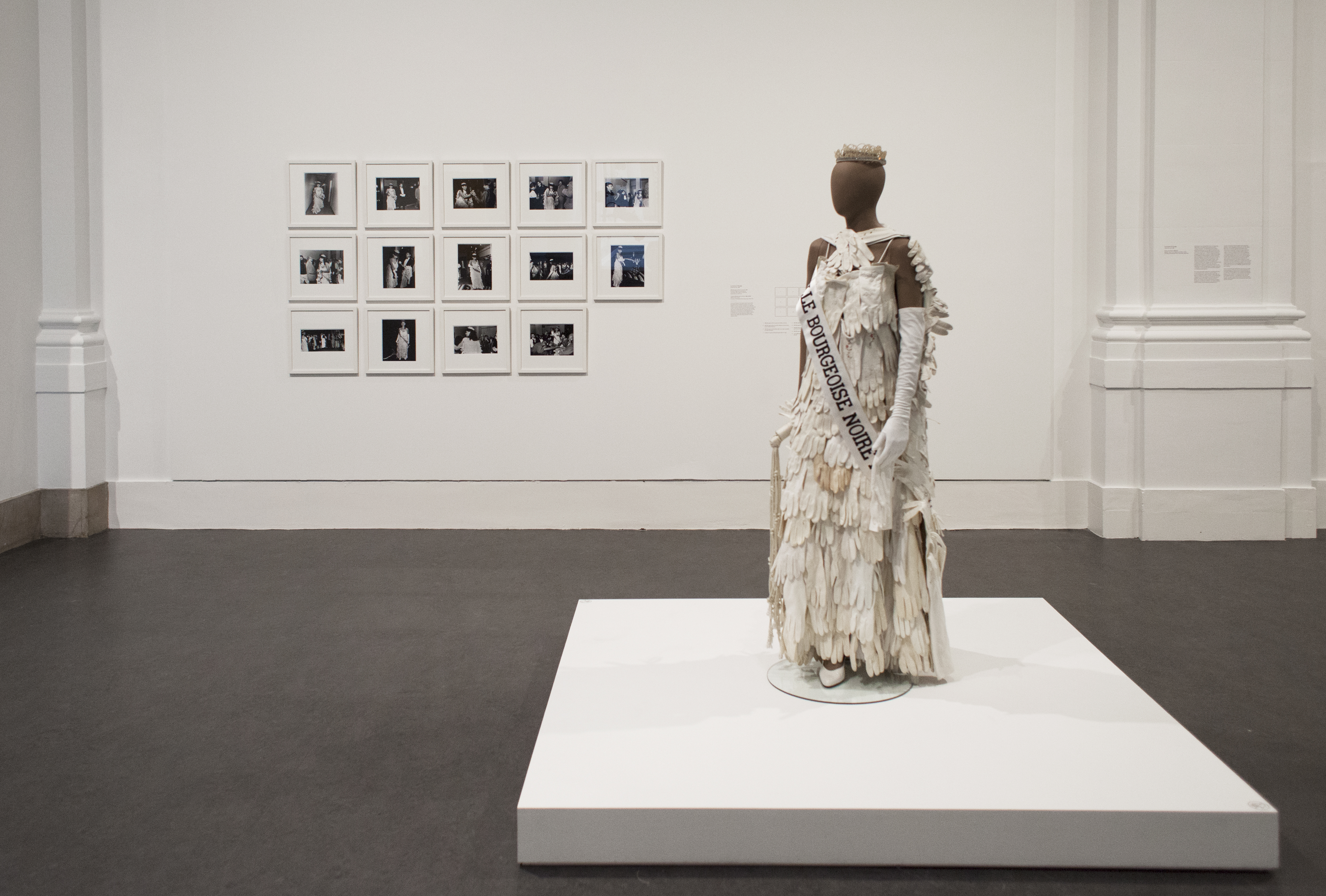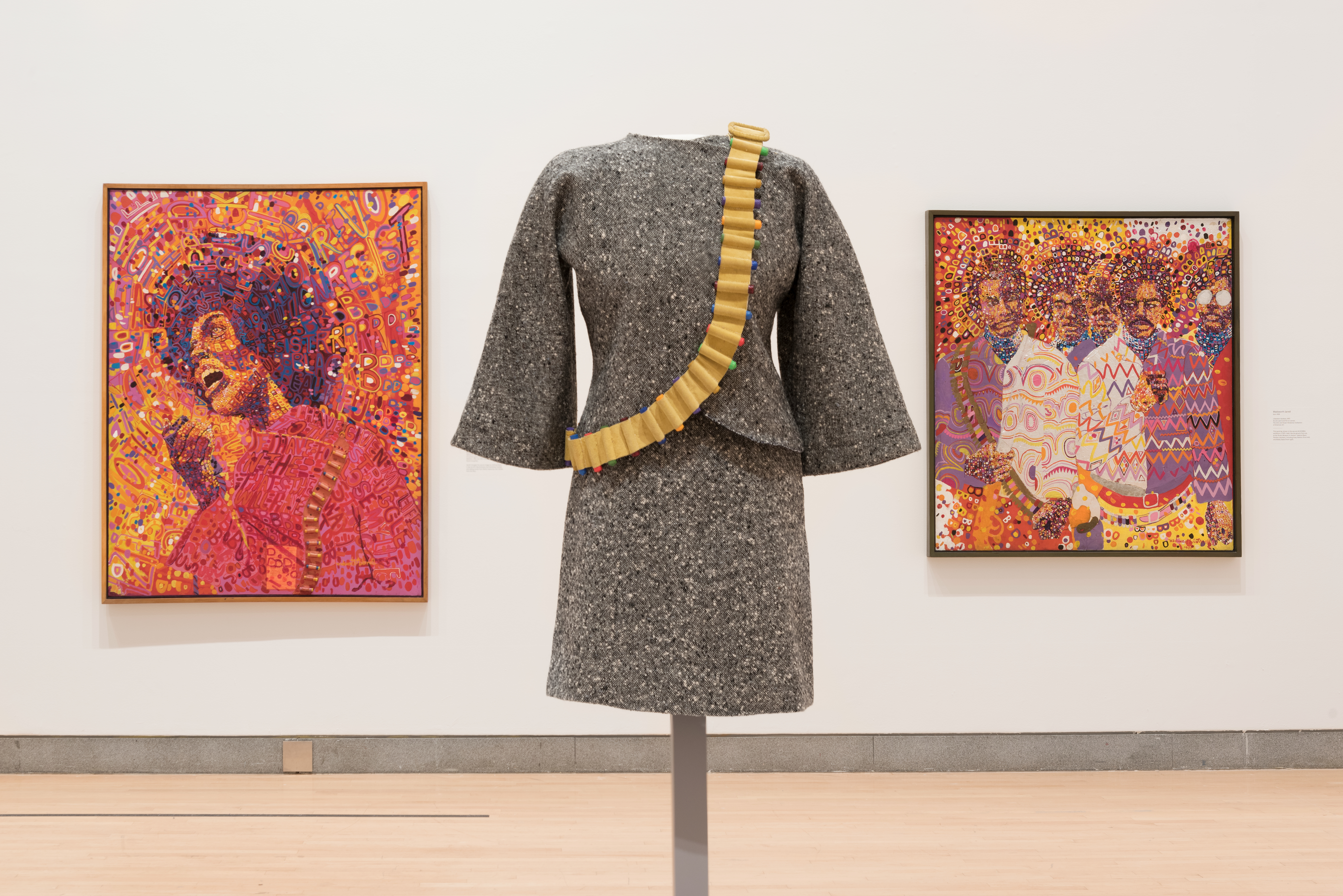As Prices for Art by African-American Artists Rise, These Issues Need to be Addressed

 During the spring auction season in May 2017 Basquiat’s ”Untitled“ (1982) sold for $110.5 million to the Japanese collector Yusaka Maezawa at Sotheby’s. This was sum not only a record-breaking for Basquiat’s work but also for an African-American artist. With the sale, Basquiat joined the exclusive club of artists selling over the $100 million dollar mark alongside Pablo Picasso, Andy Warhol, Gustav Klimt, and Rembrandt, among others. A year later, in May 2018, the hip-hop mogul Sean Combs a.k.a P. Diddy paid $21.1 million for Kerry James Marshall’s “Past Times” (1997) a price that the Chicago Tribune calls “near the maximum paid for a living artist.” Although it was a record for an African-American artist, considering that David Hockney’s “Portrait of an Artist” that sold for $90 million held the record at the time, the statement is wildly exaggerated. It is safe to say that in regards to headlining auction prices, the African-American art market seems to be heading in the right direction – but also that headlines can be misleading.
During the spring auction season in May 2017 Basquiat’s ”Untitled“ (1982) sold for $110.5 million to the Japanese collector Yusaka Maezawa at Sotheby’s. This was sum not only a record-breaking for Basquiat’s work but also for an African-American artist. With the sale, Basquiat joined the exclusive club of artists selling over the $100 million dollar mark alongside Pablo Picasso, Andy Warhol, Gustav Klimt, and Rembrandt, among others. A year later, in May 2018, the hip-hop mogul Sean Combs a.k.a P. Diddy paid $21.1 million for Kerry James Marshall’s “Past Times” (1997) a price that the Chicago Tribune calls “near the maximum paid for a living artist.” Although it was a record for an African-American artist, considering that David Hockney’s “Portrait of an Artist” that sold for $90 million held the record at the time, the statement is wildly exaggerated. It is safe to say that in regards to headlining auction prices, the African-American art market seems to be heading in the right direction – but also that headlines can be misleading.
The African-American auction sales have been top heavy. The total African-American art market has generated $2.2 billion at auction. Basquiat, however, accounts for $1.7 billion of the art sold, while the total sales of African-American artists (excluding Basquiat) add up to $460.8 million. And, based on data from Artnet, 25% percent of that sum was accumulated from January to June of 2018.
 Previous: Installation view. One Basquiat. Photo by Jonathan Dorado courtesy of Brooklyn Museum. Above: Kerry James Marshall, “Past Times,” 1997. Acrylic and collage on unstretched canvas. Photo courtesy of Sotheby’s
Previous: Installation view. One Basquiat. Photo by Jonathan Dorado courtesy of Brooklyn Museum. Above: Kerry James Marshall, “Past Times,” 1997. Acrylic and collage on unstretched canvas. Photo courtesy of Sotheby’s
Diving in deeper to these numbers, 5 artists dominate the majority of those sales with Mark Bradford having sold for $117.2 million, Glenn Ligon for $47.7 million, Marshall for $46.6 million, Julie Mehretu for $42.8 million, and David Hammons for $42.7 million. Abstract artist Bradford’s work has centered around large-scale grid infused work that includes collaging. Mehretu’s work is large scale and incorporates the layering of acrylic paints in an abstract fashion. Hammons work, on the other hand, more directly speaks to the civil rights and black power movement. Glenn Ligon’s conceptual art explores race, sexuality, and identity through intertextuality across multiple mediums. Marshall has evolved his comic style work to larger scale paintings and sculptures that focus on the quintessential African-American life. All these artists represent the diversity of the African-American experience, but also the range of American art forms.
 Amy Sherald, “First Lady Michelle Obama.” Oil on linen, 2018. Photo by Paul Morigi courtesy of the National Portrait Gallery.
Amy Sherald, “First Lady Michelle Obama.” Oil on linen, 2018. Photo by Paul Morigi courtesy of the National Portrait Gallery.
While the past few years have been powerful for African-American art beyond the market – Kehinde Wiley and Amy Sherald were commissioned to paint portraits of former US President Barack Obama and Former first lady Michelle Obama and Martin Puyear is representing America at this year’s Venice Biennale – less than 10% of exhibitions in America’s top museums feature work by African-American artists. The Studio Museum in Harlem accounts for one-third of these exhibitions. As secondary sales of work by African-American artists continue to increase, this is an issue that the art world needs to address.
The Importance of Support from Blue-Chip Galleries
Art market prices are intrinsically connected to gallery representation that in turn can help facilitate museum shows. One of the most recent exhibitions “Soul of a Nation: Art in the Age of Black Power” at the Brooklyn Museum, New York exhibited a generation of African-American artists that grew up in an era where most communities in America, including museums not to mention art schools themselves, were still segregated.
“Soul of A Nation: Art in the Age of Black Power” presented an artistic narrative that has been overlooked but is critical to the history of America. The exhibition revealed 20 years of various art movements within the black community – thus proving that Black art is not an isolated movement.
As African-American artists begin to gain in recognition mega galleries are also picking them up. The right gallery representation can make an artists career and commercial galleries have begun to match institutions in regards to size, funding, and goals. Most blue-chip galleries have an international presence and an international client-base; so, when a new artist joins their roster they will immediately have a global reach. Capitalism, however, drives the gallery world and the political, economic, and cultural privilege that accompanies it.
Lisson Gallery was integral for the recent attention, and the price increase, of Cuban-American minimalist artist, Carmen Herrera. Herrera’s work was overlooked for decades and she did not sell her first piece until the ripe age of 89, yet integrating her into the gallery’s rooster showed the need to recognize artist that contributed to the richness of minimalist art.
 Lorraine O’Grady, Performance ephemera Mlle Bourgeousie Noir, 1980s. 180 white gloves and mixed material in “We Wanted a Revolution: Black Radical Women, 1965-85.” Photo by Jonathan Dorado courtesy of Brooklyn Museum.
Lorraine O’Grady, Performance ephemera Mlle Bourgeousie Noir, 1980s. 180 white gloves and mixed material in “We Wanted a Revolution: Black Radical Women, 1965-85.” Photo by Jonathan Dorado courtesy of Brooklyn Museum.
There are galleries that specialize in African-American art and the difficult work of lifting well-deserved artists of color. In New York, Jack Shainman is one of them and Alexander Gray Associates. The latter represents Lorraine O’Grady, among others, who was included in the “We Wanted a Revolution” exhibition at the Brooklyn Museum.
At the inaugural Frieze Los Angeles art fair Marshall’s “Black Boy” (2018) sold for $1.5 million by David Zwirner; Nick Cave’s “Arm Peace” (2018) sold for $110,000, Carrie Mae Weems’s “The Blues” for $110,000, Hank Willis Thomas’s “Faith” (2017) sold for $85,000, and Gordon Parks‘s “Department Store, Mobile, Alabama” (1956) sold for $68,000 all four by Jack Shainman; Adam Pendleton’s ”OK DADA OK BLACK DADA OK (DA DA)” (2018) sold for $120,000 by Pace; and Senga Nengudi’s nylon mesh and metal sculpture “Blossom” (2014) at Sprüth Magers sold for $80,000. These recent sales indicate the interest in the variety that African-American art has to offer.
While blue-chip galleries are generally seen as homogenous spaces – representing overwhelmingly white and male artists – they are now showing that they also have the ability to redefine the make-up of representation in the art world. Galleries like Gagosian have added Theaster Gates, and Virgil Abloh while Mark Bradford is represented by Hauser & Wirth. The dialogue that is being created by owners and directors is moving the needle in the right direction.
De-accessioning Public Art Works
In 1995 the city of Chicago commissioned Kerry James Marshall to create a piece for the Legler branch public library in the West Side of Chicago. The artist was paid $10,000 for the painting that he fittingly titled “Knowledge and Wonder.” In November 2018, when the city attempted to sell the piece at Christie’s with a high estimate of $10 million it sparked a lively debate. As no museum would afford to pay the $10 million price tag, it would probably transfer to a private collection, the sale sparked the question of what side of history the city is on: partaking in the gamble which is the art market or committing to building an art collection that is available to the public over time.
In “The Price of Everything,” an HBO documentary on the art-market Njideka Akunyili Crosby watches in dismay as an artwork recently acquired from her gallery by a private collector sells for $900K at auction – thereby entering into the highly speculatory and sometimes disruptive secondary market. Like many artists, she would rather see her work in museum collections. “Museums are the gatekeepers of culture,” she says continuing “these are works that matter not just for our generation but for future generations.”
Joel Strauss the Chicago-based art advisor who was responsible for the most recent sale of Marshall’s “Past Times” sees the secondary art market as favorable to an artists career. He says: “the art market follows what is increasing in value, there are a lot of people who bought the artist at a modest price, not all, it’s not the entire body of an artists work, it’s the human way when prices are going for higher more people are interested.” In the best-case scenarios, many of these collectors, in turn, donate and loan works to museums.
Marshall commented in Artnews that the city of Chicago would be better off selling the Picasso sculpture in Daley Plaza since the estimated resale value was $35 million. After much criticism, the city withdrew the work from the sale.
…if cities continue to take part in making a profit on the rocketing art market a new model that favors, or respects, living artists should be considered.
When, if ever, is it right for a city to sell off works from its collection intended for the public? If public collections begin regarding art as an asset class, or investment, should they also consider adding a resale percentage to benefit the artist if a work is sold? If the artist lacks gallery representation should the resale percentage be higher? In 2018 the Resale Royalties act entitling fine artists to be paid royalties when their art was resold was struck down in California. But, if cities continue to take part in making a profit on the rocketing art market a new model that favors, or respects, living artists should be considered.
Funding for Scholarship and Research
Across Ph.D. programs offered through various universities in the United States, I was only able to count 13 African-American art historians – a surprisingly low number. In 2018, The Getty Research Institute announced their African-American Art History Initiative with a mission to “promote advanced research in an area of American art that has been underfunded and under-researched,” but more funding is necessary.
Research at auction houses is moving forward more quickly, Swann Auction Galleries has dedicated over a decade to the expertise of African-American art and 4,000 pieces of work have passed through their saleroom. Philips has also worked to increase their focus through the selling exhibitions “American African American,” featuring work by African American artists. In London, in 2017 the sale included 24 artists, and due to its success Phillips senior advisor Arnold Lehman, also Director Emeritus of the Brooklyn Museum, decided to expand it in time and scope for the sequel in New York which included 64 artists active beginning in the 1950s through to today.
With the steady rise of the African-American art market both expanding and strengthening scholarship in the field is urgent. The academic scholarship will bolster the quality of museum exhibitions, as they will invariably continue to rise in numbers.
The Role of the Museum
The first African-American exhibition in America was staged in 1969 at The Metropolitan Museum of Art. “Harlem on My Mind: Cultural Capital of Black America, 1900-1968” surveyed archived and photographic work, but not a single piece of “fine art.” This exhibition was extremely protested but resulted in a needed recognition of the lack of diversity in American institutions. During the late 1990s museums continued to exhibit African-American art from a white perspective. Culturally specific institutions like The Studio Museum in Harlem, founded in 1968, and the Museum of African Diaspora in San Francisco founded in 2005, have been important institutions to counterbalance the exclusion of artists of color, a form of social and political aggression, that has been and still is carried out by other museums across the country.
It is clear that museums need assistance in tackling the issue of representation; one non-profit organization working to this aim is Souls Grown Deep. Their mission is to promote the work of African-American artists from the American South. They have had over 350 artworks from their collections acquired by leading museums including works the Brooklyn Museum, Spelman College Museum of Fine Art, Museum of Fine Art, Boston, Dallas Museum of Art, and The Morgan Library & Museum. These acquisitions can reveal a change in the narrative in museum institutions. African-American art belongs to the culture of American history and to the museums that serve it.
 Installation view. “Soul of a Nation: Art in the Age of Black Power.” Photo by Jonathan Dorado courtesy of Brooklyn Museum.
Installation view. “Soul of a Nation: Art in the Age of Black Power.” Photo by Jonathan Dorado courtesy of Brooklyn Museum.
When art by African-American artists cannot be found on the walls of our museums they are missing from the artistic history of our country, thus creating a false narrative. The acquisition of African-American art reaffirms the importance of incorporating the African-American perspective into American history.
Negotiating the Shift from African-American Art to American Art
The most substantial difference between American Art and African-American Art has been the value and merit placed on it. For years, the market has ignored various African-American artists. Finally, the art world is reevaluating the narrow narrative to include more colors on the spectrum. African-American artists have never been confined to one genre but they have been understood through the one characteristic that unites them, race. How long will this position be accurate? This question is part of an ongoing dialogue in scholarship, critique, and curatorial practice.
***
Galleries are beginning to fill holes in their roosters, and dealers are creating a context that they feel responsible for. Now is the time to unearth important artistries that have been overlooked. The increase in buying and selling also acts as a driver for institutions to collect and show African-American art. Firstly, as museum boards consist of patrons who more often than not are motivated to promote works in their own collections. Secondly, galleries often help fund museum exhibitions. It is clear that galleries, collectors, institutions, and the public are ready to appreciate African-American art.
What's Your Reaction?
An art professional with Chicago-based art non-profit Project&, Caira Moreira-Brown studied Art History at The Ohio State University receiving a B.A in History of Art with an emphasis on Post-Modern and African-American art history. She regularly writes for FAD Magazine and founded the podcast The Curatorial Blonde. Previously, she has held positions in gallery administration at Fredrich Petzel Gallery, 67 Gallery, Joseph editions and has worked at Kim Heirston Art Advisory and The Wexner Center for The Arts. Moreira-Brown is interested in post-modern race relations and narrative change. l igram l email l

